Weirdest Traffic Laws from Each State
Even on the Federal Highway System, the Rules of The Road vary from state to state. Here we’ve collected and commented on some of the more arcane and unusual traffic laws you may want to remember if you live in, or travel in the United States. Read up! Ignorance of the law is no excuse, and if you break the law, you may have to take traffic school to dismiss the ticket.
Alabama – It’s illegal to drive a car while blindfolded.
Alaska – No driving with a dog tethered to your car.
Arizona – It’s against the law to drive a car in reverse on a public road.
Arkansas – in Little Rock it’s against the law to honk your car horn anywhere that serves cold drinks or sandwiches after 9 p.m.
California – In Glendale, it’s illegal to jump from a car going over 65 mph.
Colorado – It’s illegal to drive a black car on a Sunday in Denver.
Connecticut – it’s illegal to hunt from a car.
Delaware – “R” rated movies shall not be shown at drive-in theaters.
Florida – It is illegal to skateboard without a license.
Georgia – There’s no driving through playgrounds in Georgia.
Hawaii – It’s against the law for a vehicle in motion to use its hazard lights. People might think it’s a Luau.
Idaho – it’s forbidden for Senior Citizens over the age of 88 must lose all sense of balance, them to ride a motorcycle in Idaho Falls.
Illinois – It’s illegal to drive a car without a steering wheel. And, of course, impossible.
Indiana – It’s against the law to sell cars on Sundays. Try Maine.
Iowa – No vehicle may sell ice cream in Indianola, Iowa.
Kansas – No tire screeching in Derby, Kansas.
Kentucky – It’s illegal for your pet to molest a vehicle in Fort Thomas.
Louisiana – A woman’s husband is required by law to walk in front of the car waving a flag as she drives it.
Maine – It’s illegal to buy a car on a Sunday. Better move to Indiana.
Maryland – It’s a misdemeanor to swear from a vehicle while driving through Rockville.
Massachusetts – You cannot drive with a gorilla in your backseat. In the front seat is okay with the seat belt buckled.
Michigan – It’s against the law to sit in the middle of the street and read a newspaper. But in Detroit you may lie there and be covered by one.
Minnesota – You can be charged as a public nuisance if your truck leaves mud, dirt or sticky substances on the road in Minnetonka.
Mississippi – In Oxford, it’s illegal to honk your horn, even though it is an additional means of communication included in the price of your car.
Missouri – You can’t honk someone else’s car horn in University City, Missouri.
Montana – You can’t drive a herd of livestock numbering more than 10 on an interstate highway unless the herd is preceded and followed by flagmen.
Nebraska – By law, drivers on mountains should drive with caution near the right edge of the highway. Surprisingly, Bighorn Mountain rises to 4,731 feet.
Nevada – Even though it’s the desert, t’s illegal to ride a camel on the highway.
New Hampshire – It’s against the law to inhale bus fumes with the intent of inducing euphoria. If you want to kill yourself, that’s covered under a different law.
New Jersey – If you have been convicted of DUI, you can never apply for personalized license plates.
New Mexico – It may or may not be kidnapping, but it is illegal for cab drivers to reach out and pull potential customers into their taxis.
New York – It’s against the law to disrobe in your car in the beach town of Sag Harbor, Long Island.
North Carolina – In Dunn, North Carolina it’s illegal to play in traffic.
North Dakota – it’s illegal to lie down and fall asleep with your shoes on.
Ohio – It’s illegal to run out of gas in Youngstown.
Oklahoma –Cars must be tethered outside of public buildings. No guidance on to what.
Oregon – It is illegal to place a container filled with human fecal matter on the side of any highway. No containers!
Pennsylvania –Any motorist who sights a team of horses coming toward him must pull well off the road, cover his car with a blanket or canvas that blends with the countryside, and let the horses pass.
Rhode Island – One must make a loud noise before passing a car on the left. Preferably with your vehicle’s horn.
South Carolina – When approaching a four way or blind intersection in a non-horse driven vehicle you must stop 100 ft. from the intersection and discharge a firearm into the air to warn horse traffic.
South Dakota – No horses are allowed into Fountain Inn unless they are wearing pants.
Tennessee – It’s illegal to shoot game from a moving vehicle. But hitting it with your car is legal, and can be delicious.
Texas – You must have windshield wipers to register a car.
Utah – By law, birds have the right of way on all highways. Luckily, they don’t usually exercise it.
Vermont – It’s illegal for cars to backfire in Rutland.
Virginia – Radar detectors are illegal.
Washington – A motorist with criminal intentions must stop at the city limits and telephone the chief of police as he is entering the town.
West Virginia – It’s legal to eat road kill. No info on whether you can shoot it from your car.
Wisconsin – One may not camp in a wagon on any public highway.
Wyoming – If you open a gate over a road, river, stream or ditch, you’d must close it behind you.
Top 5 Ways to Get Around the University of Arizona
If you plan on visiting the University of Arizona or attending the school and will not have a car (or want to avoid getting a ticket that only AZ traffic school would be able to dismiss), you may find yourself trying to figure out the best ways to get around. The campus spans over 380 acres making it too large to walk. Here are the best options for getting around the campus of the University of Arizona.
Sun Link Tucson Modern Streetcar
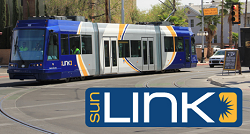
One of the best ways to get around the campus is to take the Sun Link Tucson Modern Streetcar. This is public transportation, so anyone, including visitors and students, can make use of this option. The streetcar has various stops around the campus and continues into downtown Tucson. Discount monthly passes for this form of transportation are available for students or visitors can buy full-day or single ride tickets at vending machines available at the waiting stations.
The CatTran Shuttle

Another way to get around the University of Arizona campus is with the CatTran shuttle. The CatTran shuttle is free to all students enrolled in the university with a valid university identification card. And if you are visiting the campus to take a tour or for other educational reasons, you will likely be given a pass that allows you access to this shuttle. There are various stops, making it convenient. And the shuttle runs from 6 am until 1 am Monday through Friday. The shuttle does not run on days when school is not in session or on weekends and has shorter hours during summer break.
UA ZimRide

Every student enrolled in the university and every staff member is given a NetIDlogin. When you log in to this system, one of the options you will be given is to participate in the UA ZimRide. This is a program through the university that helps people carpool. If you don’t have a car and need a ride to class, the program can connect you to another driver near you that goes to the same part of campus during the times you do. This is a great way for those with a car to earn a bit of extra gas mileage, while giving students without a car the ability to quickly get to and from their classes.
SafeRide

SafeRide is a program that is run by the Associated Students of the University of Arizona. This service is designed to keep students enrolled in the school safe at night and preventing them from walking or biking alone after dark. In order to use this service, you must have a valid student ID card. The service is free to use, though the hours are limited and vary based on the time the sunsets. This riding option also has an app that allows you to check hours easily and determine when the next shuttle will be coming to the stop you may find yourself waiting at.
Bike

The last way that both students and visitors can easily get around the campus is by bike. The University of Arizona was awarded a gold ranking by the League of American Bicyclists for being a bicycle-friendly university. The campus allows you to park your bicycle in many different places or rent a spot in a secured bicycle storage area for only $35 per year. The university also rents out bikes, allowing visitors the opportunity to bike around the campus.
The University of Arizona is a large university. And if you are going from one side of campus to another, it may be too far too walk. Luckily, there are several different ways to get around the campuses for students, faculty and visitors.
What to see in Arizona and How to Get There
Arizona is a big place. It’s totally possible to head to Rhode Island and just drive around and see what you see. You can likewise cruise up and down the coast of California and take in whatever sites you land upon, and the same goes for New Jersey and D.C.
But in Arizona, if you don’t have a plan, you’re going to wind up burning up a lot of miles, getting lost along the state’s vast highway system and generally just making a beeline from gas station to gas station until it’s time to head back home. You’ve got to have a plan, you can’t expect to simply stumble upon any great discoveries in the enormous expanses of the great Southwest. Make sure pay attention to the traffic laws. If you violate one, you may have to take an AZ defensive driving course to stop the points from going on your record. Here are the must-see spots on your trip through the American desert:
The Grand Canyon
This one is obvious, of course. What is there to say about the Grand Canyon? There are no words to do it justice, you simply have to go and see it for yourself once in your life. It’s an American rite of passage.
Montezuma Castle
The Montezuma Castle National Monument dates back to the 1100’s, when the Sinagua people carved their homes into the sides of cliffs. The Montezuma Castle overlooks Beaver Creek and will take you back to a time that feels somewhat strange and magical. The castle was here before any white people were, and it stands as an amazing, surreal piece of architecture in the desert landscape.
You can find Montezuma Castle on Montezuma Rd. in Camp Verde, AZ.
Meteor Crater
The ancient meteor crater, about thirty-seven miles east of Flagstaff and eighteen miles west of Winslow, features, as you’d expect, an enormous crater produced by an ancient meteor impact. There is a visitor center and a museum. Unfortunately, they don’t let you walk the rim of the crater, but it is nevertheless an amazing thing to see.
Desert Botanical Garden
The Southwest is beautiful, but it gets to be a little repetitive with its reds and browns and oranges. After a while, you want to see a little more green and yellow and purple, all those beautiful colors you get to enjoy in the more humid states where flowers and fruit grow like weeds. The Desert Botanical Garden can be found at 1201 N Galvin Parkway in Phoenix, and they offer a beautiful splash of color in the desert. Native flora like yucca and cacti are on display, along with colorful flowers of all colors. A nice change of pace from the typical scenery you get in Arizona.
Old Tucson Studios
If you’re a movie buff, don’t leave Arizona without visiting the Old Tucson Studios at 201 Kinney Road in Tucson. A landmark in the history of the Western film genre, the studios are now a Western-themed movie park, showcasing vintage cars and movie sets, with attractions like a haunted mine walk, a carriage ride, and a train for getting around the premises. The Old Tucson Studios will take you back in time to the glory day of the American western film.
Arizona is one of the greatest places in the world to stage your own adventure. The grand scenery, the history and culture of the land, the unique flora and fauna all make for an experience you can’t get anywhere else. It is distinctively Southwestern, and distinctively American. A journey through the Southwestern desert is simply the best road trip that the country has to offer.
How to drive in a dust storm in AZ
Dust storms in Arizona are often referred to as brownouts. This is because the dust becomes so thick, that you may not be able to see anything if you get caught in one. They typically form in the summer months but can form any time of the year. It can be a scary and unsafe situation if you are stuck in one while out driving. You may not be able to see other cars and they may not be able to see you. Here are a few tips on what you should do when you drive in a dust storm in Arizona.
Look for a Safe Place to Pull Over
Most drivers will see a dust storm forming. It is rare that they come out of nowhere. You will either see the dirt and dust kicking up directly in front of you or you will realize that dust is gradually whipping around your car. As soon as you notice this, you will want to begin to look for a safe place to pull over. This may be a parking lot or the shoulder of the freeway. Do not take the risk of continuing to drive hoping conditions will improve. If visibility decreases quickly, look to the painted center line in the middle of a road to guide you until you can safely pull over, all while pressing on your horn every few seconds to let other drivers know where you are.
Turn Off Your Lights
In the past, drivers were told to keep their lights on after they pulled over in a dust storm. However, the advice now is to turn your lights off once you pull over. Other drivers caught in the dust storm may look for taillights as a way to guide them through the storm. They may not realize that you are pulled over and not moving, and in turn, hit your car. As such, it is important to shut off your lights until the storm is over.
Leave the Radio On
As you wait out the dust storm, leave your car radio on. There will likely be weather warnings or emergency warnings. Keeping your radio on will let you know if additional dust storms are forming and whether you should stay put or get moving once the initial dust storm passes.
Do Not Start Driving Again Until You Have 300 Feet of Visibility
When a dust storm begins to die down, you may find yourself wondering if you can begin to drive again. It is recommended by our AZ traffic school that you wait until you can see about 300 feet in front of, behind and to the sides of you. If you do not have this much visibility, the storm may not have died down completely. This means it can kick back up again quickly.
Prepare for a Possible Downpour
Once a dust storm has passed, it is important that you be prepared for a possible downpour. Many dust storms are followed by heavy, but short, bursts of rain. If you are not aware of this, it can catch you off-guard. As such, always drive safely and cautiously after a dust storm has passed. And just like with a dust storm, find a place to safely pull over if the rain becomes so hard that your visibility is affected.
Getting caught in a dust storm can be scary as you may not have any visibility. However, learning what to expect and what to do if you find yourself in this situation can help ensure you stay safe until the dust storm in Arizona passes.
Is it Legal to Text and Drive in Arizona?
If you are going to be driving through Arizona, you may be wondering if Arizona is a hands-free state or not. This means whether you are allowed to use a cell phone behind the wheel, talking or texting, while driving in the state. The answer is, “It depends.” See below for details!
Is It Illegal to Text and Drive in Arizona?
At this time, there is not a statewide ban on texting and driving in the state of Arizona. Certain cities, such as Tempe, Phoenix and Tucson have passed city wide ordinances which ban drivers from texting while driving in the city. And legislation has been passed to prevent certain occupational workers, such as school bus drivers, from texting while driving. Unfortunately, as this time, there is not a statewide resource for which cities or counties have an ordinance in place. As such, you will have to research the towns you plan on driving through and find out if it is legal or illegal to text while driving.
Is it Illegal to Talk on the Phone While Driving in Arizona?
Just like with texting, there is not a statewide ban on talking on the phone while driving in Arizona. However, the cities that ban texting also ban talking on the phone while driving, unless you are using a hands-free device, such as a Bluetooth receiver. There is currently legislation aiming to ban both talking and texting throughout the state of Arizona. However, as of February 2017, this legislation has not been passed.
Is it Illegal to Talk or Text on the Phone While Parked in Arizona?
If you are passing through a city in Arizona that has banned texting or talking on a cell phone while driving, you may wonder if you can pull over or park in a parking lot and use your phone. As long as you are in an area where you can legally pull over or park, you are allowed to do so and use your phone. If there is a no parking or no stopping sign, you should not stop. While you can’t be fined for texting or talking on your phone in these areas, you can be fined for illegally stopping or parking.
Can You Still Be Fined for Texting or Talking on a Cell Phone in a City Without an Ordinance Banning It?
While there is no ban specifically making texting or driving illegal in the state of Arizona, it is important to not that the state does have distracted driving laws. By law, you are not allowed to do anything that can impair your ability while driving or causes you to take your eyes off the road for longer than five seconds. If you are caught doing this, you can get a ticket that can only be dismissed by AZ traffic school. This can include playing with the radio or texting while driving. If you are swerving while driving or an officer sees you with your eyes looking down or not on the road, they can pull you over and issue you a ticket and fine. So while texting and talking is not specifically banned in all parts of the state, you can still be in trouble for doing it due to distracted driving laws.
Texting and talking on the phone while you are driving puts you at higher risk for being involved in a car accident. It can cause you to lose your focus on the road or fail to see a hazard. Even though texting and talking on the phone are not outlawed in all parts of Arizona, it is strongly suggested that you refrain from doing so for both your own safety and the safety of other individuals on the road.
How to Get to Arizona
There are so many fun and amazing things to do in Arizona. You can go to the Grand Canyon, kick off baseball season at a spring training camp, or take in amazing scenery at places like Sedona, Horseshoe Bend or Cathedral Rock. Regardless of why you are going to Arizona, you may have decided to make it a road trip. This can be fun and allows you to see so many different things along the way. Regardless of where you are coming from, you will likely cross through one of these major points on your journey into the state. Here are directions and how to get to Arizona from each of those major areas.
From Las Vegas
When you are headed into Arizona from Utah, Nevada or Northern California, you will likely pass through Las Vegas on your way to Arizona. Once you hit Vegas, you have three different routes you can take into Arizona. If you are headed into Phoenix, you will want to take US-93 South. If you are looking to go through Kingman and/or Flagstaff, you will want to take I-40 east. And if you are looking to go through Laughlin into Bullhead City and Lake Havasu, you will want to take I-10 east.
From Southern California
If you are heading into Arizona from most major Southern California towns, including Los Angeles and Burbank, you will want to take 1-10 east. If you stay on this freeway for about five to six hours, depending on where you are coming from, you will hit Phoenix, Arizona. If you stay on even longer, you will hit Tucson. If you are coming from San Diego, you will want to take I-8 through Yuma until it connects to 1-10. Otherwise, you are backtracking a lot just to head up to Los Angeles and connect to 1-10. Make sure you are always staying within the speed limit, the only way out of a traffic ticket in Arizona is taking AZ traffic school.
From Albuquerque
If you are traveling from places such as Arkansas, Oklahoma and Mississippi, you will likely pass through Albuquerque, New Mexico on your way into Arizona. Once you hit Albuquerque, you can decide to head into Arizona via two different routes. You can take 1-40 west if you are headed into places such as Flagstaff, Sedona or the Grand Canyon. You will want to take US-60 west if you are headed into the Apache Sitgreaves National Forest. If you are headed into Phoenix, Mesa or Tucson, both routes will take you there in about the same time. It is simply a matter of preference and scenery.
From Texas
If you are driving a long distance and coming from places like Florida or Louisiana, you may pass through Texas on your way to Arizona. Or you may simply already reside in the Houston, San Antonio or Austin areas of Texas and want to head through Arizona. If you do, you will want to take 1-10 west until you are in Arizona. If you stay on 1-10 west, you will pass through Tucson and then hit Phoenix. If you are coming from Fort Worth, Dallas or other more northern Texas cities, you will want to take 1-20 west until it hits 1-10 west and stay on until you are in Arizona.
From Mexico
If you are coming into Arizona from Mexico, you will want to enter through the Nogales border crossing. Mexican Federal Highway 15 leads you directly into this border crossing. This highway connects with many others throughout the west side of the country including Highway 2, 43 and 150. Once you have passed through the border crossing, you will want to stay on 1-19 north until you hit I-10. Most travelers will go west to head into Phoenix, but you can head east to visit Tombstone, Arizona.
There are many different routes into Arizona. If you are traveling into Arizona, you will likely be traveling through one of these destinations. These directions will help you arrive in Arizona safely.
How To Get an AZ Driver License
If you have recently moved to Arizona or have not obtained a driver license in the state, you must obtain the license before you can legally drive a vehicle. Thankfully, the state’s Motor Vehicle Division (MVD) makes it quite easy to obtain an AZ driver license. Here is how to do it.
The Basics of Arizona Driver’s Licenses
Those who have moved to Arizona from another state and have a valid driver’s license will likely be able to bypass the written knowledge test as well as the driving test. Military members who have moved to Arizona from another state can transfer their home state driver’s license in a streamlined manner. There are several different types of Arizona driver’s licenses.
The so-called “normal” driver’s license is referred to as the Class D Arizona driver’s license. The state also provides Class M motorcycle licenses. Those who are interested in a license to operate a commercial vehicle will need a Class A, Class B or Class C commercial driver’s license, typically referred to with the acronym of “CDL”. Teen drivers have different testing and licensing requirements including instruction permits and diver’s education.
Where to Start: The Issue of the Permits and the Application
The state of Arizona does not mandate that adult driver’s license applicants obtain a permit before applying. However, if the applicant is applying for his first driver’s license in any state, he will need a permit in order to practice driving in a legal manner. More information about permits can be found on the Arizona MVD Driver’s Permits in AZ web page.
One can apply for an Arizona driver’s license by completing the Driver License/Identification Card Application, referred to as Form 40-5122. The Arizona MVD should be commended for allowing driver’s license applicants to start the license application process on the web. This online service empowers applicants to fill out the application, figure out the necessary ID requirements and print the completed package that must be brought to the MVD office. The information the applicant enters online is transmitted in an electronic manner and subsequently stored for reference upon his visit at the brick-and-mortar Arizona MVD office.
Completing the Process
To complete the driver’s license application one must submit the above referenced application. If he hails from another state, he must surrender his out-of-state license. He must provide proof of identity as well as age and his legal presence in the state of Arizona. An apartment lease, mortgage document, or utility bill will likely suffice to prove Arizona residency. To prove one’s identity, the applicant must provide a birth certificate, U.S. Passport, a Social Security card, I-94 or two other accepted documents. One of these documents must show a clear photograph of the applicant.
All driver’s license applicants must successfully complete the vision exam. If the applicant has not obtained a driver’s license from any state yet holds a permit, he will not be required to take Arizona’s permit test. Finally, the applicant must pay the applicable fees. These fees differ by the applicant’s age as well as the type of license he seeks.
• Those between 16 and 39 years of age must pay $25.
• Those between 40 and 44 years of age must pay $20.
• Those between 45 and 49 years of age must pay $15.
• Anyone 50 years of age and older must pay $10.
Once all of these steps have been completed, the applicant will be provided with a temporary license with his photo. It will likely take several weeks for the permanent driver’s license to be mailed to the applicant’s residence. Be careful once you start driving! Arizona traffic schools stay in business due to those nonchalant drivers and help them dismiss their costly traffic tickets.
- Discover everything you need to know about California ID Cards – Read more at California ID Cards.
New 2017 AZ CAR and TRAFFIC LAWS
It seems like each new year brings about some considerable changes to traffic and vehicle laws in the state of Arizona. Though the Grand Canyon State doesn’t have nearly as many annual traffic law changes as California, Arizona drivers are forced to make several new adjustments with each passing year. This new year brings plenty of changes to Arizona’s car and traffic laws. It is imperative that the state’s drivers be aware of these alterations and respond in the appropriate manner.
What Changes are in Store for 2017?
Arizona’s law changes make red light and speeding cameras optional for towns, cities and counties. Each town/city is empowered to decide whether such cameras will remain in place or be removed. The residents of Tucson voted to eliminate these cameras. It is likely that many towns and cities throughout the state will soon follow suit.
Speed Limit Changes
HB 2032 permits counties and cities to increase or decrease the speed limits of streets positioned next to public park facilities. The old law stated that such alterations could only be altered on streets that are next to schools. This law is still in place yet it is further modified to apply to public park facilities as well as educational institutions. Pedestrians and motorists should both be hyper-cautious while traversing roads and walkways near public parks. Those who reside in neighborhoods near these facilities might take a while to adjust to the new speed limits. As a result, many will likely proceed well above or below the newly determined rate of speed. If you do get a ticket, you can dismiss it by taking AZ Traffic School online.
A new Law Just About Everyone can Agree On
Starting in 2017, the spouses and dependents of military members who perish in the line of duty will receive car registrations at no cost. You will be hard pressed to find anyone who disagrees with the spirit of this law.
Vehicle Illumination Laws
Functional vehicle lights will be mandatory in 2017. Each and every light on the vehicle must function without flaw. If the lights are inoperable, an Arizona police officer can pull the vehicle operator over and conduct a search. Though critics of this new law claim this power equates to harassment, the spirit of the law is to prevent accidents and consequently, preserve the health and well-being of Arizonans. It is also worth noting that the state has determined that police officers can use such stops as sufficient probable cause to perform a search of the vehicle. All Arizona motor vehicle operators should be aware that this style of search is admissible and legal in every regard. The bottom line is that the state has determined that the rights of police officers to safeguard the public trumps drivers’ privacy rights.
The Addition of Safety Corridors
The final week of 2016 and the beginning of 2017 brought about the designation of specific state highways as Safety Corridors. Expect law enforcement surveillance of wayward vehicles to be expanded in these areas. The purpose of designated specific highways as Safety Corridors is to decrease the number of vehicular accidents and consequently, the number of fatalities in areas that have egregiously high rates of incidents. These new Safety Corridors will be designated with signs so drivers can react in the appropriate manner. It is advisable to reduce the rate of speed, make use of signals and follow the letter of the law in these areas.
Traffic in the Context of Political Rallies
The state legislature determined that the penalty for preventing access to political events should be heightened from a class three misdemeanor all the way up to a class one misdemeanor. The aim of this law is to prevent vehicle operators from banding together to prevent freedom of expression. Anyone who attempts to hijack the right of way on Arizona roads or highways could face prosecution.
Common traffic school questions & answers for the state of Arizona
Out of all the states our AZ traffic school, MyImprov.com services, we receive the second-highest amount of inquiries from Arizona, second only to calls for help coming in from New York.
To assist those with their upcoming debacle named Arizona Traffic School, or in some cases termed AZ Defensive Driving, here are the top answers to those most frequently asked questions about the course:
Q: What is AZ traffic school?
A: AZ traffic school is a program comprised of driving-related and traffic safety material. Instead of receiving a grade or credit like you do from other schools, your successful completion of this course will mask/remove points from your driving record.
Q: How much does online traffic school cost in AZ?
A: Easily our most popular question, the actual cost of AZ traffic school depends on where you got your ticket and what county and court is listed on your ticket.
A: There are three fees that will stay the same no matter what traffic school you take…
1. State Fee: $20.00
2. State Surcharge Fee: $45.00
3. Court Diversion Fee (Depends on Court): $35.00 – $150.00
… and the traffic school fee will fluctuate depending on the school
4. Our current 2017 Fee: $37.45
Q: In dollars & cents, what is the cost of online traffic school?
A: Depending on your court, it will approximately cost between $137.45 and $252.45
Q: How long is traffic school online?
A: You are required by AZ State law to spend a minimum of four (4) hours in the course.
Q: How does traffic school online work?
A: Although every traffic school presents the AZ-Approved material in their own, unique way – AZ traffic school basically works like this:
1. Sign up and register for AZ traffic school
2. Take and Pass the course
3. Traffic school reports the completion to the AZ Traffic Court
4. Your ticket is dismissed and points are prevented from showing up on your record
5. You do nothing else!
Q: How do I sign up for traffic school?
A: First, look here: AZ Court Official Website for List of Certified Schools to find an approved traffic school. We are listed under: An Online Traffic School by the Improv Comedy Club
You can sign up for traffic school online, by phone (800-660-8908), by mail or in person.
Q: How do I request traffic school?
A. If you are eligible to take traffic school, you will see an option box on your ticket. By clicking that option box you are requesting/agreeing to take traffic school to dismiss your ticket.
You can do this by mail, phone or the court website.
Q: Am I eligible to take traffic school online?
A: If your ticket and/or courtesy notice says that you are eligible to take traffic school AND you haven’t attended traffic school within 12 months, then you are most likely eligible to take the course.
However, no matter what, an approved AZ Traffic School is REQUIRED to officially confirm your eligibility by inspecting a copy of your driver license and actual ticket.
Q: What if I do not have a copy of the actual traffic ticket? Can the traffic school confirm my eligibility a different way?
A: You can call the traffic court and they can fax a copy of the actual ticket to you or to the school. This is THE ONLY way a traffic school can LEGALLY confirm your eligibility.
Q: How often can you complete online traffic school?
A: You can take AZ traffic school once every 12 months… for infinity.
Q: What do you do in traffic school?
A: Read, listen, and watch material on AZ traffic laws, car facts, defensive driving skills, traffic statistics and more. You will also take a final quiz at the end of the course or, if you are taking our MyImprov.com AZ Course, you will answer 2-3 quiz questions after each chapter. There are 10 chapters in our course.
Q: Can I fail the online traffic school course?
A: Yes, but do not fret! You are allowed to copy and paste the course material, so the quizzes/finals are “open book.” As long as you get 20 out of 25 multiple choice questions correct, you pass!
If you happen to fail, then you will have to go to a classroom course to take the course over. Court fees will be forwarded, however, you will not receive a refund for the traffic school fee.
Q: Where can I complete MyImprov’s online traffic school?
A: You can take our MyImprov.com online course on your computer, smart phone or any device that has an internet connection! It is mostly reading… therefore you will be scrolling down the screen for the most part and occasionally watch (optional-only) videos.
Q: Does online traffic school erase traffic tickets/DMV points?
A. Completing and passing AZ traffic school will prevent the new points associated with your current traffic ticket from being added to your driving record…it will not remove existing points from your record. Only court-ordered Traffic Survivor School can do that.
Q: When is my online traffic school due?
A: You need to complete AZ traffic school SEVEN (7) days before your court appearance date.
Q:It might be too late for me to take online traffic school. Is there anything else I can do?
A: Yes! You can call the traffic court on your ticket and ask them for an extension. They usually give a minimum of one extension per case.
New AZ Car Laws for 2017 and Beyond
Arizona may not change its traffic laws with the same frequency as neighbor California. Nevertheless, in 2017, and beyond, motorists will notice a fair number of new AZ car laws.
Everyone needs to be cognizant of the regulations because in many cases the authorities are exercising zero tolerance for discrepancies.
Here are five of the newest changes to Arizona traffic laws. Some were adopted in 2015 or 2016 but will come into effect in 2017 or have a significant effect on the population this year onward.
City Speed Limits in Park Areas
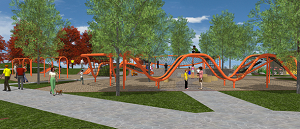
Municipalities will have the power to either raise or lower the speed limit in areas next to public park facilities. They already hold this authority in school zones.
Both motorists and pedestrians near parks should be cautious because not everyone will be aware of the changes. Longtime residents of these neighborhoods may be used to the traditional speeds and either proceed more slowly or quickly than designated.
Working Car Lights Mandatory

Every light on a car must be working. Otherwise, an officer has a right to pull the driver over for a search. Some believe this power amounts to harassment. The state has decided that officers can use the stop as probable cause to conduct a search of the vehicle.
Misunderstanding the interpretation of the law will get many into trouble. It is easy to see how motorists would believe that such a search would be inadmissible. However, they must accept that the state seems to think that the right of officers to protect the public outweighs the privacy rights of drivers.
Safety Corridors
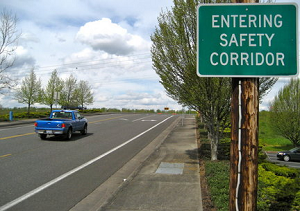
Beginning the last week of December 2016 and continuing in 2017, certain Arizona highways will be designated Safety Corridors. Law enforcement surveillance of motorists will be extra vigilant in these locations. Those breaking traffic laws will face increased odds of getting caught, as a result.
The goal of the Safety Corridors is to reduce the number of accidents and fatalities in places noted for high incidents. Fortunately, signs will designate the Safety Corridors so that motorists can react accordingly, reducing speed, using signals and generally doing whatever the law dictates.
Blocking Traffic at Political Rallies
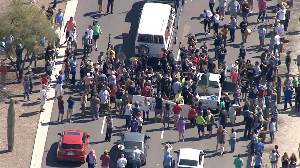
In 2016, the legislature decided that enough was enough when it came to political protesters. Hoping to protect the freedom of expression, lawmakers increased the penalty for blocking access to political events from a class three to class one misdemeanor. Those charged will now face serious consequences.
The laws will remain on the books in 2017, despite the fact that the emotional 2016 election is now over. All of this means that those who try to take over Arizona highways and roads for political reason could face prosecution and a possible permanent record.
Marijuana DUIs

In November 2016, the state electorate rejected Proposition 205, which would have legalized recreational marijuana use.
Many mistakenly believe marijuana does not fall under the DUI regulations. They believed Proposition 205, if passed, would have brought marijuana under the DUI rubric. Yes, the wording of the proposed law did explicitly mention marijuana DUI stops. Yet, officers can already arrest those suspected of driving while influenced by the herb.
Motorists should realize that in 2017, they can actually face two charges if using marijuana while driving, both possession of an illegal substance and a DUI.
Be Careful in 2017 and Beyond
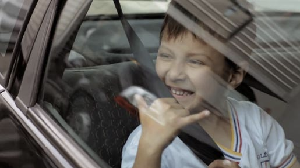
As seen here, a lot has changed in Arizona recently. Motorists hold the responsibility for knowing the current laws. Keep checking for more changes and be careful while on the roads.
Arizona Gets Failing Grade On Highway Safety
Of the 15 laws designated by the Advocates for Highway and Auto Safety, Arizona only has six in place. This is after a decade of work to make the state a safer place to drive for everyone. For instance, Arizona does not have a primary seat belt enforcement law nor a helmet law, both of which are required for a passing grade from the AHAS.
Arizona has made a few strides forward recently. Legislators found common ground enough to pass a new graduated licensing law. that means young teens now have to pass a few steps before being given an “all-clear” to drive on their own in the state. In states which have had graduated driver’s licensing laws in place the number of teens killed in vehicle crashes has declined dramatically. This has led many driver safety advocates to push for similar laws in every state.
Arizona also has some of the toughest drunk driving laws on the books. For instance they require interlock ignition devices for those convicted of just one driving under the influence offense. In states which have had interlock ignition device requirements for first time DUI offenders, the incidence of repeat DUI offenses by the same person have dramatically declined. Several states already have these in place and several more currently have pending legislation.
Arizona legislators also recently created a new law requiring booster seats for children of a certain height and weight. these booster seats have been shown to adequately protect young (small) children in the event of a collision. The bill passed easily through the state legislature, but only after much heated debate.
Also, Arizona recently passed a requirement that drivers “move over” when approaching a stopped emergency vehicle on the side of the highway. A move is underway in the state to expand the reach of the law to include any service vehicle stopped along the road side with emergency lights activated, and it seems likely to pass.
Arizona Lawmaker Pushing Distracted Driving Legislation
So far 44 states have passed legislation restricting the use of handheld devices by drivers in one way or another. Some completely ban the use of cell phones others limit how those devices might be used by devices, focusing on texting or web surfing.
Arizona has so far remained steadfastly opposed to statewide legislation restricting the use of handheld devices by drivers. Much like the stance taken in Texas, state legislators in Arizona have focused on allowing local municipalities to pass whatever local ordinances they feel best suit the needs of their citizens. But at least one state legislator feels that is not enough and has recently made statements that he will soon introduce legislation for a statewide ban on distracted driving.
Arizona State Senator-Elect Steve Farley said he was first to propose legislation aimed at texting and driving in 2007. Last week Farley he told local media he will re-introduce similar legislation next year which he will vehemently pursue in order to put Arizona on a par with other states which already passed similar legislation.
According to the National Highway Traffic Safety Administration distracted driving is now the leading cause of fatal vehicle collisions in the United States. The NHTSA said distracted driving is now more dangerous than drink and driving, and suggested that the federal government pass a nationwide ban on the activity in an effort to promote public safety. the U.S. Congress, already contentiously debating the nation’s finances passed the buck on legislation to state legislators who have gradually undertaken to promote public safety in their jurisdiction.
In states where such laws exist drivers who violate the law face fines, fees and points added to their license, not to mention a statistically significant increased risk of being involved in a fatal collision as a result of their distracted driving behavior.
ADOT Warns Drivers: Use Caution In Construction Zones
Arizona Department of Transportation is reminding drivers there is a state law requiring drivers to move to the outside lane when approaching any emergency crews at work on city highways or roads. The law has been in effect since 2005. In 2011 the Arizona state legislation amended the “Move Over” law to include tow truck drivers, maintenance vehicles and any vehicles displaying flashing emergency lights. If drivers cannot move to an outside lane they are required to significantly slow the speed of their vehicle and pass the stopped vehicle with caution.
Since 2006 no one has died on Arizona roadways as a result of a driver failing to move their vehicle over. The 60 years previous to that saw 60 people lose their lives because drivers failed to yield for them while they were worker on the roadside.
Police, firefighters, paramedics, tow truck drivers, construction workers; the list of who might be required to work along the side of a roadway is fairly lengthy, but they all have one thing in common: they are there to help. It would seem common courtesy for drivers to slow their vehicles as they approached, allowing for a large safe area between them and the person or persons working on the road side.
In Arizona failure to “Move Over” will result in a hefty fine and points being added to your license. More significantly, if you don’t move your vehicle over you run the risk of striking and possibly killing someone who is there trying to help. If that were the case you could conceivably be charge with vehicular manslaughter.
Just about every week on YouTube a new video is posted from a dashcam in some police officer’s vehicle showing a distracted driver (drunk, sleepy, not paying attention) side-swiping a vehicle, sometimes with tragic results. In Arizona this type of behavior simply is not tolerated.
Nearly 1 Million Arizona Drivers Over The Holiday
According to
AAA of Arizona, more than 750,000 drivers hit the road over the Thanksgiving holiday, far eclipsing the number of people who decided to fly to their destination. That number was around 50,000.
With all these drivers hitting the road during the Thanksgiving holiday you might expect the number of serious traffic collisions to greatly increase, but so far (and not all the numbers are in yet) that has not been the case.
In fact, across the nation, this past Thanksgiving was much safer than previous years. There was a serious traffic pile-up in Texas, but otherwise, the holiday was calm.
It certainly didn’t hurt that the holiday weather was much more mild than it has been in years for nearly the entire country. Poor weather, especially around the holidays, always leads to more crashes, and more injuries. This year, the low gas prices caused more people to drive, and since the weather was mild the drives they took were mostly incident free.
In fact, according to the AAA of Arizona, most drivers settled for shorter trips this year, perhaps to a nearby relative or friend’s house, as opposed to their usual trip out of state or even across state. No doubt these limited duration trips also had a positive impact on the collision rate as drivers spent far less time on the roads thereby decreasing their chance of having a mishap.
There certainly is no substitute for common sense when it comes to defensive driving, but an ounce of prevention is worth a pound of cure: planning shorter trips and keeping distraction down to a bare minimum all added up to making Thanksgiving 2012 a much safer holiday for everyone.
Wind Advisory Regular Thing In Arizona
Arizona might seem like the land of clear skies and bright sunshine, but when winter rolls in it’s worth remembering that high winds are not only possible, they are likely. In fact, wind gusts of up to 70 mph happen every year throughout the winter months.
High winds mean big trouble for drivers, especially unexpected wind gusts which can not only push a vehicle off the road but actually flip an 18-wheeler or a small car. Wind gusts drive debris, lifting tons of sand into the air which can make it difficult if not impossible for the driver to see clearly. These wind storms drive powerful dust storms which regularly inundate cities and towns throughout the state.
The Arizona Department of Transportation regularly issue warnings to drivers to avoid being out on the roads during these dust storms. Not only because the high winds are dangerous but also because visibility is limited and the danger of flying debris is very great. The ADOT suggests drivers stay off the road when high winds are expected. If that is not possible they recommend drivers use extreme caution and be prepared to pull off the side of the road if visibility becomes too difficult.
The Arizona Department of Public Safety will advise drivers when high winds are expected and works in conjunction with ADOT to close roads if driving becomes too dangerous. Drivers are advised to heed these warnings or risk their own personal safety. In the case of driving bans, anyone who violates a road closure or order to stay off the road risks a citation and possible suspension of their driving privileges.
The best suggestion is to stay off the roads when high winds are expected. It is just not worth the risk.
Never Too Early For Winter Driving Prep
If you’ve never been there you might think Arizona is mostly desert that sees little winter weather and more than its fair share of sunshine. You would be sadly (and perhaps dangerously) mistaken.
Northern Arizona is at a much higher elevation and when winter comes around the dry hot region becomes wet and slick and frozen. This produces dangerous driving conditions and catches some motorists unprepared.
Perhaps nobody knows this better than folks who work for the Arizona Department of Transportation. This is evident in the fact that ADOT has already released their winter advisory warnings to motorists who might be traveling in the northern portions of the state. Among their suggestions is always keeping at least 3/4 of a tank of fuel in the car. This is both so drivers don’t have to worry about running out of gas if they get caught in traffic and so their car has a little added weight to improve traction.
For cars with rear-wheel drive adding a little extra weight in the rear of the vehicle can make all the difference on slick roads. That extra weight on the axle improves traction, no doubt about it. In some northern states, like Michigan and Wisconsin, drivers will put sandbags or even chopped firewood in their trunk as a way of increasing the weight in the rear of their car. Conventional wisdom, and experience, tells them that the extra weight will help them from getting stuck or slipping and sliding off the road when the weather turns bad.
We suppose you could accomplish the same thing by putting your friends in the backseat of your car every time you go driving somewhere, but then you’d have to worry about stopping for restroom breaks, arguing over the radio stations or aving to put up with inane conversation. instead, use an inanimate object and make your vehicle safer and quieter.












 Live Chat
Live Chat



